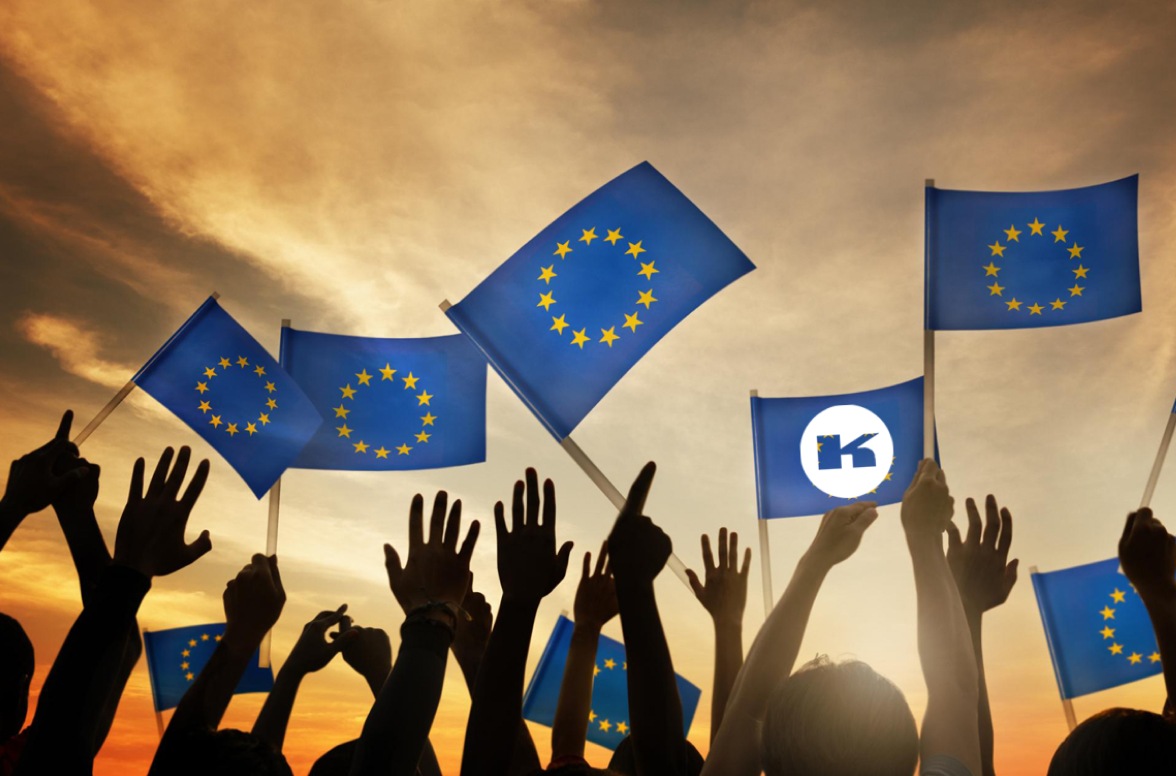21 November 2022
The American journalist Thomas Friedman has called our world ‘flat’. This has nothing to do with his attempts to challenge modern cosmology, but rather with the fact that the global competitive field has levelled out. Thanks to modern technology, even small companies can now operate on an almost equal footing with corporations and states in the international arena.
The pan-European economy is the third largest in the world, comprising 50 countries with a combined population of 748 million. It is more than a promising market for doing business internationally from anywhere in the world. And competing with local companies is absolutely real because, according to research, one in five Europeans has made cross-border purchases.
Europe’s economy – some facts and figures
- The EU economy is the 3d largest economy in the world
- In 2021, the GDP of EU was EUR14,45 trillion
- 2021 saw a growth of 5.2 % in the GDP
- The country’s per capita GDP is EUR27,830
- EU ranks 1st in terms of world exports
- The country’s major exports are Machinery including computers, Vehicles, Electrical machinery, equipment, Pharmaceuticals, Mineral fuels including oil
- The major export destinations for the EU are USA, UK, China, Switzerland, Russia
- Europe makes 44% of the world’s wines. Europe accounts for 80 percent of total cork production worldwide
- Another major export of EU are feldspar, kaolin, magnesite, perlite, salt.
- The main industries of import in the EU are Mineral Fuels, oils; Electrical, electronic equipment; Machinery, nuclear reactors; Vehicles
- The main importers to the EU are China, USA, UK, Russia, Switzerland
- Major driving domestic industries include service sector and manufacturing
- The EU ranks first in both inbound and outbound international investments
- Several large corporations have their headquarters in the EU, including Volkswagen, Glencore, Total, Damler and Allianz
What is the easiest and most effective way to enter the European market? How to avoid common mistakes made by a newcomer?
A global vision
It is highly recommended to consider the perspective of accessing the European market at the very forming stage of your business model.
To avoid common organisational mistakes, follow the next principles:
- Get ready for globalisation from the very start, don’t put it off to the future;
- Ask yourself at launch if your product would be of interest to the European market or if it will only focus on the domestic consumer?
- Make sure you have enough resources (mainly financial and IT) – expanding your business is likely to require additional efforts and funds;
- When developing your brand (name, logo, etc.) see how it relates to the cultural peculiarities of potential markets so that not to change it later on;
- If your product is unique, take care of the copyright all at once;
- When choosing a domain name in the national segment, check whether the same name is available internationally;
- Try to recruit staff with the necessary skills to manage international projects in the future.
Going to the European market is a process that requires a serious groundwork:
- In case this is your first attempt at exporting, be sure to minimise the risks. To begin with, try to start in a country whose market is similar in characteristics (language, culture, etc.) to your objectives, but more accessible. So, for example, if you want to enter Germany, it is better to try your product in Austria or Switzerland first. This will allow you to identify the weak points of your concept with minimal losses.
- Identify your competitors. This is not as difficult as it sounds, and a service like EasyBusiness can help you build up a list of competitors for any European country.
- You should research in detail the peculiarities of your potential audience and your local competitors. It is worth determining the competitiveness of your product or service in the chosen country or region beforehand. All markets are different, both socio-culturally and economically. For this purpose, a market ranking report is the best way to identify the right markets and understand your target audience.
- If you have already selected the most promising countries for expansion, you should consider Booster advantages to present online digital showcase for your company in 26 languages and to drive B2B traffic using international digital promotion tools.
Who to go with
The choice of a model for penetrating the European market depends on both the company capabilities and the local context. The forms of cooperation with a local partner can be different: a distribution agreement; an exclusive partnership under your brand; a joint venture; the purchase of a local company.
For example, a distribution agreement is recommended to enter German markets, an exclusive branded partnership – to work in the Netherlands, and a joint venture is the best option to win the Polish market.
It is crucial to have a local partner company in the new market. This increases the competitiveness of your product or service, as a local partner understands the needs and consumer behavior better, and can match the quality of the service or product with the market and give valuable advice on improving, adapting and pricing.
Product localisation
Obviously, the communication tricks that work with consumers in one country, may prove to be completely ineffective in another. You don’t want to duplicate marketing concepts, but rather personalise them for the people in that particular country. How to do it?
- Above all, you should not underestimate the importance of researching consumer behavior to understand what they want. Kompass market researches can help you reach this goal. Their data are the best source to personalise an offer to customers in a particular country;
- A properly designed digital company showcase is a key link in finding a common language with the consumer. By taking full advantage of Booster quality content visibility, you can find touch points with national audiences across Europe;
- Accessing a new market involves a rather aggressive prospecting. Who could be your potential distributors? Who is ready to buy from you directly today? The answers to these questions are provided by EasyBusiness, an online digital tool for finding potential buyers and customers.
There’s no guarantee that following all of the above tips will ensure 100% success when you go to European markets – but they would greatly increase your chances.
Describing the concept of a flat world, Thomas Friedman notes that these days small international businesses are not determined by citizenship or location, but by education, ability, persistence, ingenuity and access to the global communication system. We hope these are the factors that will accompany you on your journey to win the European market, and that Kompass will provide you with all the marketing tools you need.
Kompass EU database:
- We have more than 2,500 verified suppliers with a Kompass Trust Certificate
- Our database includes + 38 M companies in EU countries
Kompass business portals in EU countries:
- The business portals contain 60 M users in the EU countries
- In 2021, they received 8 M hits per month
- There are 150K product posts and video in EU company profiles
- In 2021 EU users sent 50K RFQs via Kompass.com
We are here to consult you on all digital market access opportunities in Europe.












Comentarios
No Comments